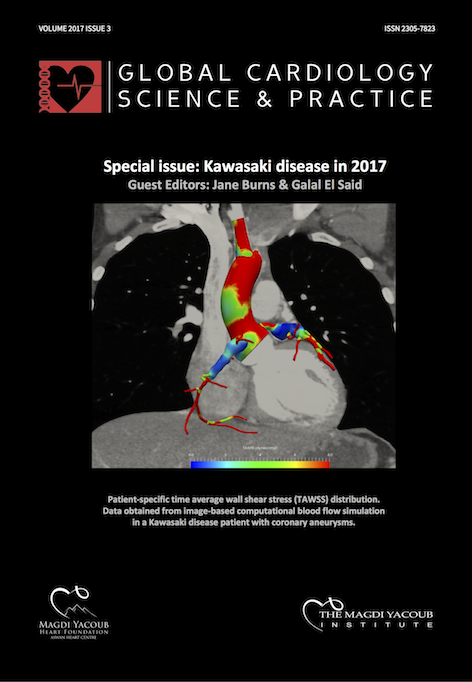Aneurysmal coronary artery disease: An overview
DOI:
https://doi.org/10.21542/gcsp.2017.26Abstract
Aneurysmal coronary artery disease (ACAD) comprises both coronary artery aneurysms (CAA) and coronary artery ectasia (CAE). The reported prevalence of ACAD varies widely from 0.2 to 10%, with male predominance and a predilection for the right coronary artery (RCA). Atherosclerosis is the commonest cause of ACAD in adults, while Kawasaki disease is the commonest cause in children and adolescents, as well as in the Far East. Most patients are asymptomatic, but when symptoms do exist, they are usually related to myocardial ischemia. Coronary angiography is the mainstay of diagnosis, but follow up is best achieved using noninvasive imaging that does not involve exposure to radiation. The optimal management strategy in patients with ACAD remains controversial. Medical therapy is indicated for the vast majority of patients and includes antiplatelets and/or anticoagulants. Covered stents effectively limit further expansion of the affected coronary segments. Surgical ligation, resection, and coronary artery bypass grafting are appropriate for large lesions and for associated obstructive coronary artery disease.
Downloads
Published
Issue
Section
License
This is an open access article distributed under the terms of the Creative Commons Attribution license CC BY 4.0, which permits unrestricted use, distribution and reproduction in any medium, provided the original work is properly cited.


